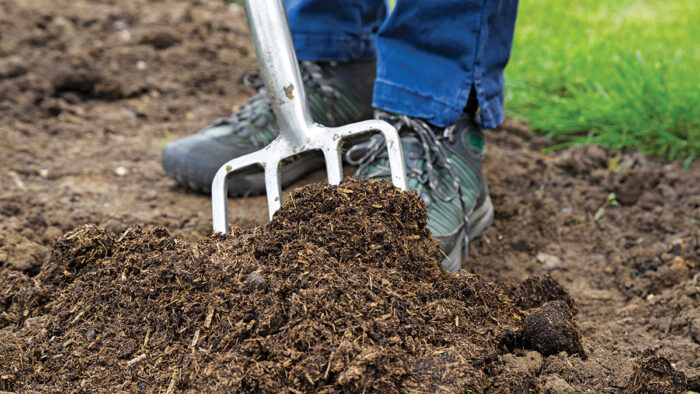
In extreme conditions like dry shade, it’s important to improve the soil as best you can. Here’s what Susan Calhoun did in her garden to enhance the environment where the plants eventually were located.
1. First, I used hardscape material to make short walls or to elevate edges.* This enabled me to add my soil mix to the freed-up space so that new plants could get established.
2. Then I dug into the first few inches of existing soil to create space for roots to grow.
3. Next, I filled the area with a few inches of new, rich soil mix. A custom blend that is approximately 40% composted yard waste, 40% native soil, and 20% sand forms a free-draining, nutrient-rich base.
4. Finally, I mixed in some composted fir bark and fish compost. The final mixture is about 80% soil mix, 10% composted fir bark, and 10% fish compost.
5. After planting, I mulched with 1 inch of composted fir bark. In the year following, I’ll mulch with 1 inch of fish compost.
* In areas where there were no walls to hold a good amount of new soil in place, I amended the existing soil with the fish compost and sometimes, depending on what we were planting, more composted yard waste.
Take a deeper look at a few key ingredients
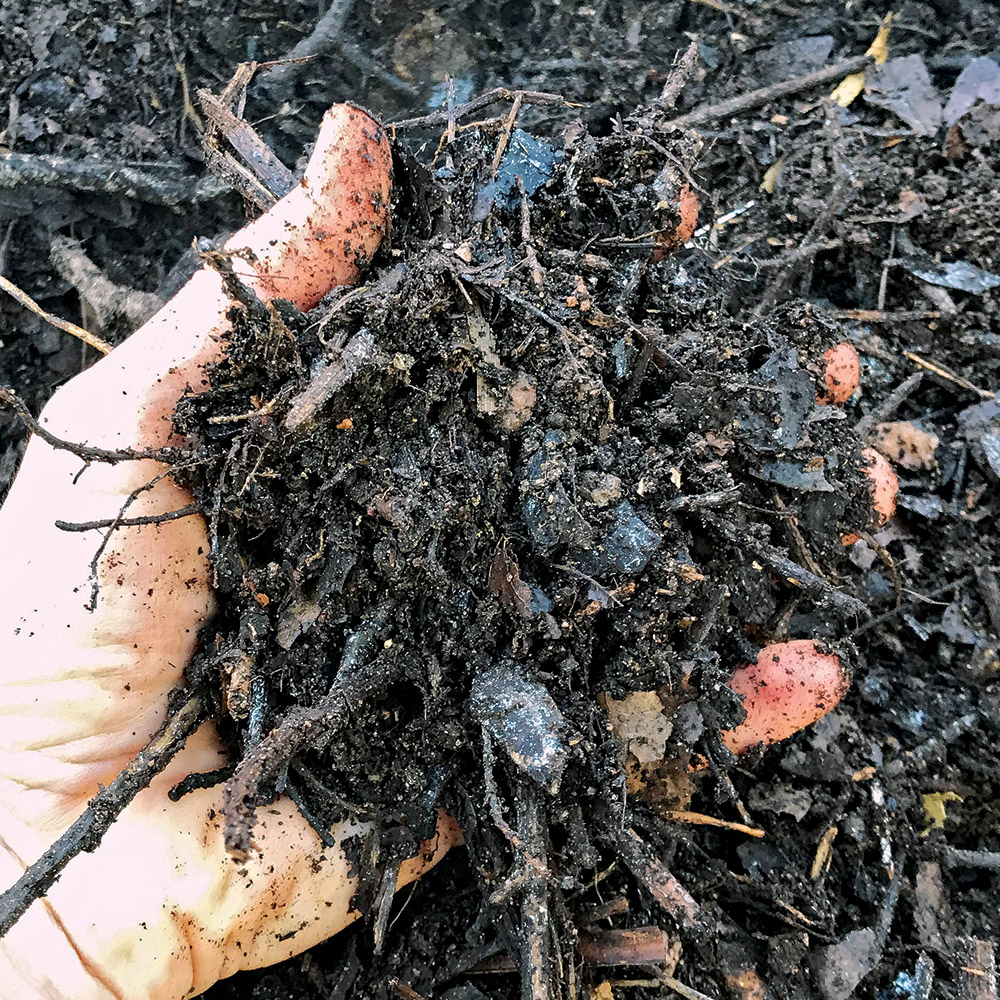
Composted yard waste
It is important for this to be weed free. The yard waste must be composted at a high temperature to kill any existing weed seeds.
Composted fir bark
Soil in this area is already acidic due to the number of conifers on site. Fir bark blended into this soil mix creates a transition between the soil mix and the native soil, which has a lot of material from surrounding coniferous trees. The fir bark also needs to be composted. Raw fir bark will break down eventually, but to do that it will take nitrogen from the soil for the decomposition process. This will rob nitrogen from new plants that need it to get established.
Fish compost
Fish compost is from fish hatcheries in our area and is weed free. It aids in plant establishment by feeding the plants while they put roots down into the base soil. We do not use any chemical fertilizers while planting. If local sourcing isn’t possible, you can purchase bagged fish compost from reputable nurseries.
View more on dry design and deer:
A Deer-Proof Garden Design for Dry Shade
Susan Calhoun is the owner of Plantswoman Design in Bainbridge Island, Washington.




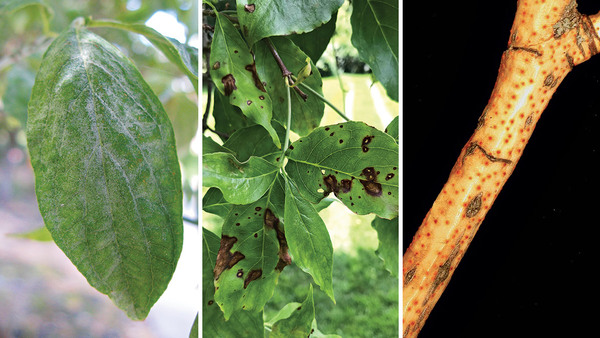
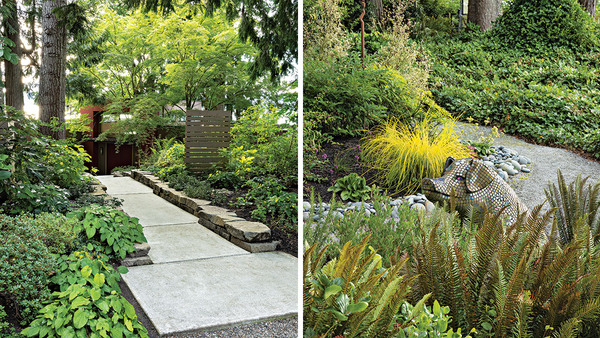

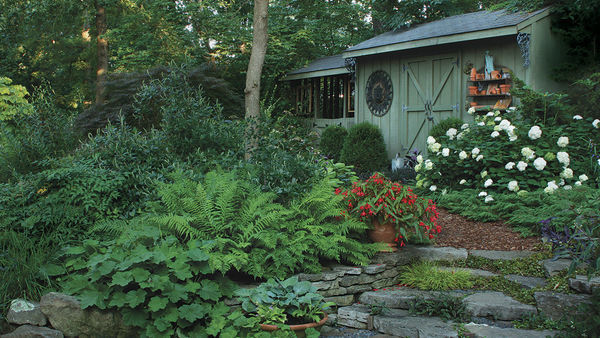












Comments
Log in or create an account to post a comment.
Sign up Log in